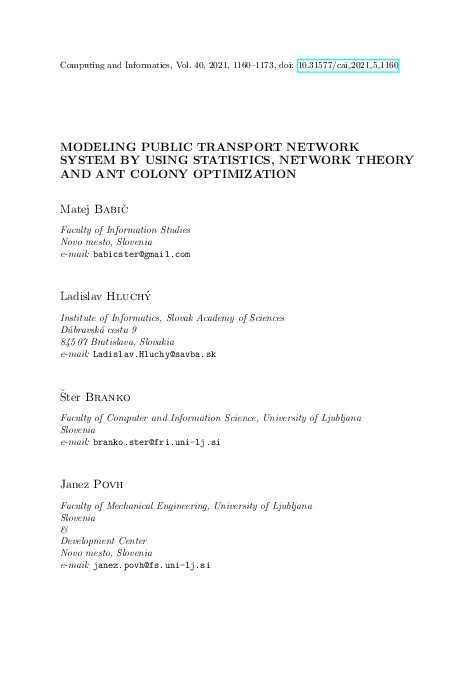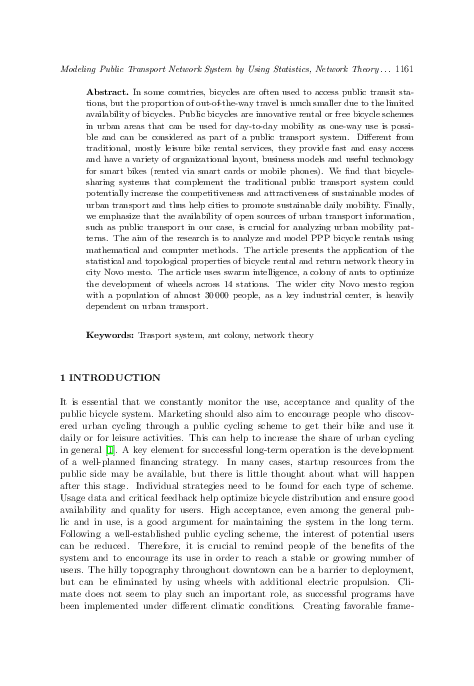Modeling Public Transport Network System by Using Statistics, Network Theory and Ant Colony Optimization
keywords: Trasport system, ant colony, network theory
In some countries, bicycles are often used to access public transit stations, but the proportion of out-of-the-way travel is much smaller due to the limited availability of bicycles. Public bicycles are innovative rental or free bicycle schemes in urban areas that can be used for day-to-day mobility as one-way use is possible and can be considered as part of a public transport system. Different from traditional, mostly leisure bike rental services, they provide fast and easy access and have a variety of organizational layout, business models and useful technology for smart bikes (rented via smart cards or mobile phones). We find that bicycle-sharing systems that complement the traditional public transport system could potentially increase the competitiveness and attractiveness of sustainable modes of urban transport and thus help cities to promote sustainable daily mobility. Finally, we emphasize that the availability of open sources of urban transport information, such as public transport in our case, is crucial for analyzing urban mobility patterns. The aim of the research is to analyze and model PPP bicycle rentals using mathematical and computer methods. The article presents the application of the statistical and topological properties of bicycle rental and return network theory in city Novo mesto. The article uses swarm intelligence, a colony of ants to optimize the development of wheels across 14 stations. The wider city Novo mesto region with a population of almost 30 000 people, as a key industrial center, is heavily dependent on urban transport.
reference: Vol. 40, 2021, No. 5, pp. 1160–1173


